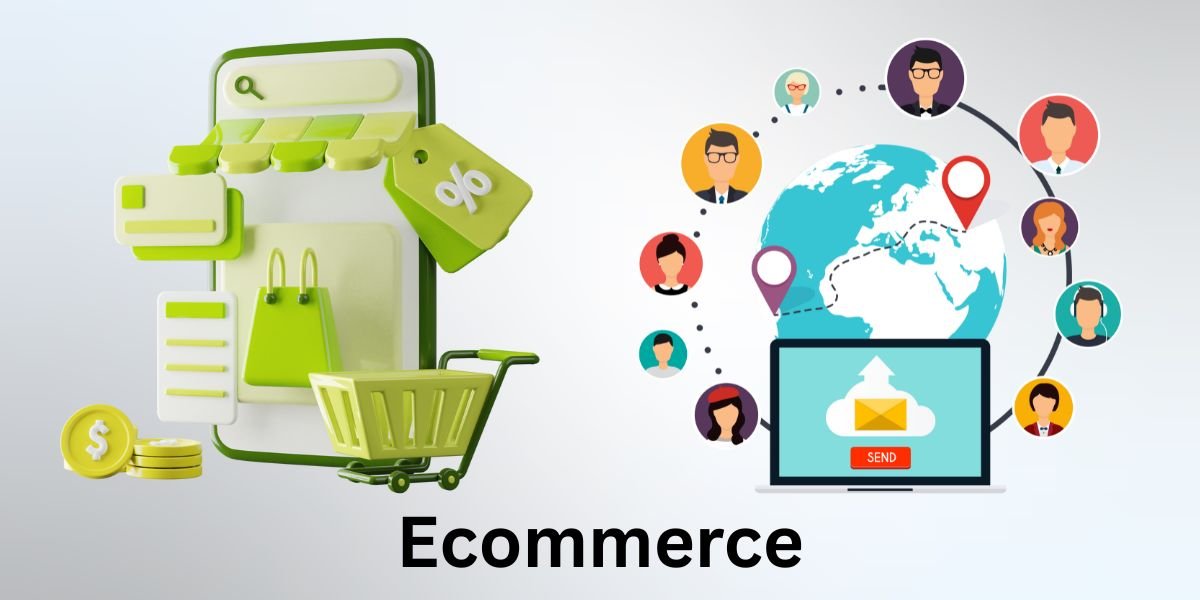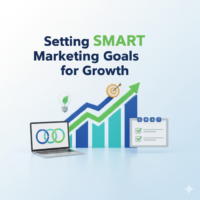E-commerce vs. Ecommerce vs. eCommerce: What’s Correct and Why It Matters for Your Business
Published: 26 Sep 2025
Have you ever searched online for “e-commerce” and found different spellings—E-commerce vs. Ecommerce vs. eCommerce? You’re not alone. While the spelling may be confusing to many, the meaning remains the same: buying and selling goods or services over the internet.
But here’s the interesting part: e-commerce is not just about shopping online anymore. It has grown into a trillion-dollar industry that shapes how we work, shop, and connect globally. From ordering food with a tap to buying cars online, e-commerce has become a normal part of our daily lives.

In this article, we’ll explore:
- Which spelling is correct (and why it matters less than you think).
- The history and evolution of e-commerce.
- Different business models with real-world examples.
- Current trends like social commerce, mobile shopping, and AI.
- What the future of e-commerce looks like.
By the end, you’ll not only know how to spell it—but also understand why e-commerce is one of the most powerful forces shaping today’s business world.
Which Spelling Is Correct: E-commerce, eCommerce, or Ecommerce?
One of the most common questions people ask is: What’s the correct way to spell e-commerce?
The truth is: all three versions are widely used.
- E-commerce → The most traditional and widely accepted form. Often used in academic writing, business reports, and dictionaries.
- eCommerce → Popular in marketing and branding because it looks modern and tech-friendly. Many startups and blogs prefer this style.
- Ecommerce → A simplified version, often used in headlines or casual content.
Example:
- Shopify (a leading e-commerce platform) mostly uses Ecommerce.
- Harvard Business Review prefers E-commerce.
- Digital marketers often use eCommerce in blogs.
So, which one should you use?
- If you’re writing formal or academic content, go with E-commerce.
- If you’re building a brand or writing marketing content, eCommerce may look more appealing.
- If you’re keeping it simple for casual readers, Ecommerce works fine.
Bottom line: Choose one style and use it consistently. Search engines don’t care about spelling variation, but consistency makes your writing look more professional.
The History and Evolution of E-commerce
E-commerce didn’t just appear overnight — it evolved step by step with technology. Let’s look at how it started and grew into the trillion-dollar industry we see today.
The Beginning: 1970s–1980s
- The idea of electronic transactions began in the 1970s with Electronic Data Interchange (EDI).
- In 1982, Boston Computer Exchange became the first C2C platform, allowing people to buy and sell used computers.
Think of it as the “grandfather” of eBay!
The 1990s: The Birth of Online Shopping
- 1994 → The first encrypted online transaction happened when Dan Kohn sold a CD for $12.48.
- 1995 → Amazon and eBay were founded. Both completely changed how people shop online.
- Pizza Hut also offered online ordering in the 90s — yes, even pizza delivery became part of e-commerce early on!
The 2000s: E-commerce Becomes Mainstream
- Companies like Alibaba (1999) and PayPal (1998) made global trade and online payments easier.
- Online shopping became common, especially in electronics, books, and clothing.
- Security improved with SSL certificates, making customers feel safer entering credit card details.
The 2010s: Mobile Commerce & Social Shopping
- Smartphones changed everything. People could now shop from anywhere.
- Social media platforms like Facebook, Instagram, and Pinterest became shopping hubs.
- Amazon Prime popularized fast shipping, raising customer expectations worldwide.
Today: 2020s and Beyond
- E-commerce is now a trillion-dollar industry.
- Technologies like AI, chatbots, AR try-ons, and voice commerce (Alexa, Siri) are shaping how we shop.
- Social commerce (buying directly on TikTok, Instagram, or Facebook) is booming.
- E-commerce is no longer just about shopping; it’s about personalized experiences, speed, and trust.
Key Insight:
E-commerce has evolved from a simple CD purchase in 1994 to AI-powered, mobile-first, and global marketplaces today.
The Four Main Types of E-commerce Models
Not all e-commerce is the same. Who’s buying and who’s selling makes a big difference. Let’s break it down.
1. Business-to-Consumer (B2C)
This is the most common type — when a business sells directly to individual customers.
Examples:
- Amazon (books, electronics, literally everything)
- Nike’s online store
- Pizza Hut’s online ordering system
Why It Matters:
- B2C is all about speed, convenience, and emotional connection.
- Customers buy based on desire, trust, and experience — not just logic.
Marketing Strategies for B2C:
- Storytelling & Branding → Apple uses lifestyle-driven campaigns, not just product specs.
- Social Media Ads → Instagram reels, TikTok videos, and influencer shout-outs.
- Email Marketing → Flash sales, cart abandonment reminders, discount codes.
If you sell trendy clothes, showing them on TikTok with a catchy song could get you thousands of views in hours.
2. Consumer-to-Consumer (C2C)
When individuals sell directly to other individuals.
Examples:
- eBay (classic peer-to-peer marketplace)
- Etsy (handmade crafts, art, and vintage items)
- Facebook Marketplace (local buying and selling)
Why It Matters:
- C2C is built on trust. Buyers rely heavily on reviews and ratings.
- Transactions are usually small, but the volume is high.
Marketing Strategies for C2C:
- SEO Optimization → To rank your product listing high.
- Community Building → Etsy sellers often run Instagram pages to showcase handmade products.
- Trust Signals → Good reviews, professional photos, and clear product descriptions.
If you sell handmade jewelry, posting customer reviews with photos will help others trust your brand.
3. Business-to-Business (B2B)
Here, businesses sell to other businesses.
Examples:
- Alibaba (wholesale products for businesses)
- Salesforce (CRM software for companies)
- HubSpot (marketing automation tools)
Why It Matters:
- B2B deals are usually bigger in value but fewer in number.
- Decisions take longer because companies analyze ROI before purchasing.
Marketing Strategies for B2B:
- Content Marketing & Case Studies → Show proof of success with numbers.
- LinkedIn Ads → Target decision-makers directly.
- Email Campaigns → Nurture leads with useful insights before pitching a sale.
If you sell software to businesses, a case study showing how your tool increased sales by 35% will win clients faster than just saying “We are the best.”
4. Consumer-to-Business (C2B)
In this model, consumers provide value to businesses.
Examples:
- Freelancers on Upwork and Fiverr offering services to companies
- Influencers promoting a brand on Instagram or YouTube
- Stock photographers selling images to businesses
Why It Matters:
- The rise of the gig economy and creator economy has fueled C2B growth.
- Brands are shifting budgets to independent creators instead of traditional ads.
Marketing Strategies for C2B:
- Personal Branding → Freelancers need strong LinkedIn profiles or portfolios.
- Influencer Marketing → Brands prefer micro-influencers with loyal audiences.
- Niche Expertise → Businesses hire experts in specific fields for quick, high-quality work.
If you’re a graphic designer, you can create a portfolio on Behance and land projects from big brands without ever leaving your home.
Quick Recap Table
| Model | Who Sells | Who Buys | Example | Marketing Focus |
|---|---|---|---|---|
| B2C | Business | Consumer | Amazon, Nike, Pizza Hut | Emotional branding, social media |
| C2C | Consumer | Consumer | eBay, Etsy, FB Marketplace | Trust, reviews, community |
| B2B | Business | Business | Alibaba, Salesforce, HubSpot | ROI, LinkedIn, case studies |
| C2B | Consumer | Business | Upwork, Influencers, Stock photos | Personal branding, niche skills |
Additional E-commerce Models
While the four main models (B2C, C2C, B2B, C2B) dominate the digital world, there are also government-related models that often go unnoticed. These models make life easier for both businesses and consumers.
1. Business-to-Administration (B2A)
This model happens when businesses provide products or services to the government or public institutions.
Examples:
- A software company selling accounting software to a local government office.
- An IT company providing cybersecurity solutions to defense departments.
- A contractor supplying online payment systems for a tax authority.
Why It Matters:
- Governments rely on private companies for technology and services.
- B2A deals are often long-term and involve large budgets.
Marketing Tip:
- Success in B2A depends on credibility and compliance. A company must prove it meets legal, financial, and security requirements.
2. Consumer-to-Administration (C2A)
This model happens when consumers interact with government services online.
Examples:
- Paying utility bills or taxes through online portals.
- Renewing passports or driver’s licenses online.
- Booking medical appointments at public hospitals via apps.
Why It Matters:
- Saves time and reduces paperwork.
- Encourages digital transformation in public services.
Marketing Insight:
- While C2A isn’t about “marketing” in the traditional sense, governments can use digital campaigns to encourage citizens to use online services instead of standing in long queues.
Quick Recap
- B2A = Business → Government
Example: A cybersecurity firm providing digital tools for government offices. - C2A = Consumer → Government
Example: Paying electricity bills or applying for tax refunds online.
Both models show how e-commerce extends beyond just shopping — it also reshapes governance and public services.
Choosing the Right Path in E-commerce
E-commerce is like a vast digital marketplace with many doors. Each door leads to a different opportunity — but not every door is right for everyone. The key is to choose the model that fits your SMART goals, resources, and audience.
1. For Entrepreneurs & Small Businesses
- Best Fit: B2C or C2C
- Why? These models let you sell directly to people and start small with limited investment.
- Example:
- A local clothing brand selling on Shopify (B2C).
- An individual selling handmade crafts on Etsy (C2C).
Tip: Use social media marketing to grow visibility without spending too much.
2. For Freelancers & Creators
- Best Fit: C2B
- Why? It allows individuals to monetize their skills or audience.
- Example:
- A graphic designer offering services on Upwork.
- An influencer is charging brands to promote products.
Tip: Focus on personal branding — showcase your expertise through blogs, LinkedIn posts, or short videos.
3. For Established Companies
- Best Fit: B2B or B2A
- Why? These models involve large contracts, steady clients, and long-term relationships.
- Example:
- A SaaS company selling CRM software to enterprises (B2B).
- A tech firm providing payment solutions to government agencies (B2A).
Tip: Invest in data-driven marketing — use analytics, case studies, and ROI-driven messaging to win deals.
4. For Everyday Consumers
- Best Fit: C2C or C2A
- Why? They allow regular people to participate in e-commerce without being big businesses.
- Example:
- Selling old gadgets on Facebook Marketplace (C2C).
- Paying taxes online instead of standing in long queues (C2A).
Tip: Even as a consumer, focus on safety — always verify platforms and use secure payment options.
Takeaway:
There’s no “one-size-fits-all” in e-commerce. Your path depends on who you are, what you sell, and who you sell to. Start small, test strategies, and then scale once you see results.
Final Remarks
E-commerce is more than just online shopping — it’s a powerful system that connects buyers and sellers in many ways. Whether it’s B2C, B2B, C2C, or C2B, each model offers unique opportunities. The spelling may differ — e-commerce, Ecommerce, or eCommerce — but what really matters is how you use it to grow your business or career. The future of e-commerce is only getting bigger, and now is the best time to take part.
FAQs About E-commerce
The most widely accepted spelling is e-commerce (with a hyphen). It’s clear, professional, and recognized worldwide.
B2C (Business-to-Consumer) is the most common. Examples include Amazon, Walmart Online, and Shopify stores.
Yes! Through C2C (like eBay, Etsy) and C2B (like Upwork, influencer deals), individuals can sell products, services, or even their reach.
Digital marketing is crucial. Without it, your online store won’t reach customers. SEO, social media, content, and email marketing all play key roles.
E-commerce is moving toward mobile-first shopping, AI personalization, and social commerce. The market will continue to grow and evolve in response to technological advancements.

- Be Respectful
- Stay Relevant
- Stay Positive
- True Feedback
- Encourage Discussion
- Avoid Spamming
- No Fake News
- Don't Copy-Paste
- No Personal Attacks

- Be Respectful
- Stay Relevant
- Stay Positive
- True Feedback
- Encourage Discussion
- Avoid Spamming
- No Fake News
- Don't Copy-Paste
- No Personal Attacks





